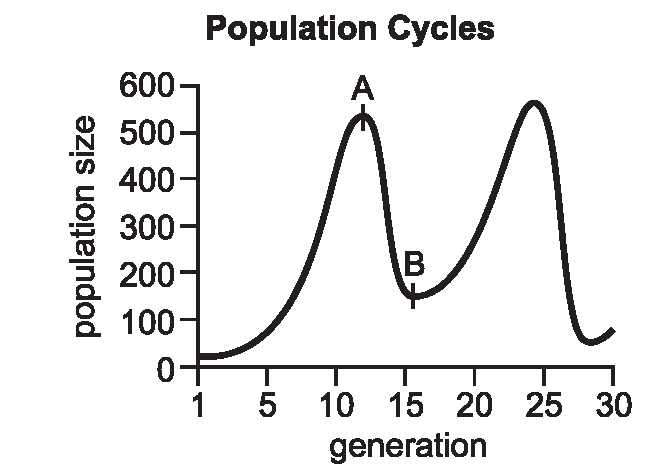A scientist found that the results of an experiment did not support...
The graph provides information about the size of 1 rabbit population...
Dr. Hansen performs an experiment testing the effectiveness of...
After learning about viruses in Biology class, Sam decides to have his...
Which sequence is in order from the simplest level of organization to...
Carbon-14 is a radioactive isotope used to determine the age of...
As part of an experiment, a student adds 10 mL of 5% hydrochloric acid...
A Paramecium lives in an environment that is hypotonic to its...
After Harrison adds a chemical to cells growing in a test tube,...
What is the purpose of mitosis?
While investigating yeast respiration, a researcher detects ethanol in...
Red blood cells have a salt content of 0.9%. When a microbiologist...
Which is the LEAST likely trait of an organic molecule?
Cosmetics often contain glycerol (C3H8O3), which has three identical...
What trait of an ATP molecule enables it to store energy for use by...
What combine with sugar and a phosphate group to form a nucleotide?
Adrenoleukodystrophy (ALD) is a sex-linked recessive trait that...
Cystic fibrosis is a genetic disease in which mucus accumulates in the...
Which event of meiosis reveals the mechanism for understanding...
During what phase of meiosis does nondisjunction occur?
Keisha passes a local dairy farm that has many brown cows, but only a...
What process of natural selection favors the extreme phenotypes of a...
According to fossil evidence, whales evolved from 4-legged ancestors....
Which criterion is NOT necessarily true of a trait that has evolved...
What accounts for genetic biodiversity existing in modern...
Lazzaro Spallanzani and Louis Pasteur both performed experiments...
In pea plants, purple flowers are dominant to white flowers and tall...
In addition to the reproductive system, which body system is most...
Plant cells contain both a cell wall land a cell membrane. What is the...
Thylakoid membranes within chloroplasts contain chlorophyll. The...
Hummingbirds transfer pollen from one flower to another while feeding....
Which group(s) contain organsims that can be classified as primary...
The presence of what cellular structure distinguishes a plant cell...
In a classic study of population growth, G.F. Gause obtained data on...
A flagellated protozoan lives within the intestines of a termite and...
If a football field in the taiga is abandoned, which group of...
When a new volcanic island forms, the pioneer species is the first...
In the following food chain, assuming that the producer contains...
Lions and tigers both belong to genus Panthera., Cheetahs belong to...
















